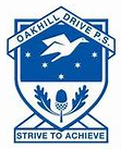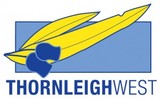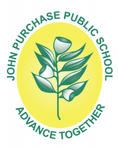|
The TWPS Instructional Rounds team have been active in the learning process when preparing for IR. Through sustained substantive communication and narrative we came up with key concepts. This involved questioning, reflecting and synthesising information. We believe our “deep” thinking has enabled us to create a better understanding of the problem of practice.
Dilemmas Planning from the big idea and concepts (top down) assists in deciding what is important in the learning. Having a clear understanding of the purpose of learning allows focus on the deep understanding and deep knowledge embedded in the task. Deep understanding is facilitated by examining the topic from many angles, making connections and challenging assumptions and application. It depends on richly integrated and connected knowledge (Ritchhart). Quality teaching elements need to be addressed consistently, especially deep knowledge and understanding, substantive communication, higher order thinking and problematic knowledge. This is to ensure teachers are questioning themselves as to why the learning matters, how content is presented, the learning that students demonstrate and how they create meaning and understanding. The key to building deep understanding is the level of processing students are asked to do with information and knowledge. Understanding is built up of many small performances of ever-increasing complexity brought together (Ritchhart). http://mrsnurmi.wixsite.com/intellectualrigour The importance of increased classroom talk by students and allowing students the time to discuss and question is important because of how it deepens student learning. Developing teacher skills with ‘simple’ procedures like wait time that takes the teacher out of every single interaction has the benefit of giving the students time to think (wait time 1 – after asking the question) and to elaborate (wait time 2 – after they think they have finished their answer). It also allows higher order questioning by the teacher as teachers listen interpretatively rather than evaluatively (Dylan Wiliam) which increases the level of processing and deepens the understanding in the task. This can have major effects on student thinking, student-student talking, questions being asked by students and speculative and inferential thinking by students. The aim of teacher questioning is to stimulate thought, to provoke inquiry and to spark more questions, including thoughtful student questions, not just pat answers. However, why the teacher asks the question and whether it is essential depends on the purpose, audience, context and impact. Is the question more open-ended inviting multiple responses and stimulates students to ask their own questions or do we wish to lead the students to knowledge and answers. Questions that lead allow the teacher to check learners can recall specific knowledge. Guiding questions lead students to answers by combining and using inference about knowledge and skills. Questions that hook are used to grab student attention and capture interest and imagination. However, using classroom discussion positively allows the teacher to focus on asking ‘essential questions’ – the questions that point to the big ideas of a subject and are aimed at advancing knowledge to the next level of understanding for students. (Table of question levels?) What is an essential question? https://www.youtube.com/watch?v=sDfVOIZ2tU8 Challenging teacher beliefs and expectations is important to the problem of bringing about sustained change in practice. Teachers need to believe in learning-orientated classrooms and this is not achieved by merely giving teachers a new set of practices to use. Thinking about our expectations for students, ourselves and the learning process itself form the foundation for the culture experienced in the classroom (Ritchard). Teachers focused on learning are listening for learning from their students and responding with descriptive feedback to inform learning, questioning and looking for learning opportunities. Reflection by teachers and students is an important process for organising learning and being able to “go beyond” the information and knowledge given or already acquired, to know more than you ‘ought’ to know – is “one of the untarnishable joys of life”. The enemy of reflection is the breakneck pace. (Bruner) Big Questions Reports don’t reflect these big ideas What does a good teacher look like? How do we know students are learning? Big Ideas
Hoping to observe A classroom with positive interactions. A belief that learning is important and that everyone is there to help each other. Talk is focused on learning and using descriptive feedback and reflection around the big idea by teachers and students. Student – student interaction- talk time with think pair share; co-operative and collaborative learning opportunities enabling students to work together , share ideas and question and assist/challenge each other’s thinking. Teacher – student interactions which involves modelling and guiding; wait time and thinking time; responsive to student answers, follow up questions, using descriptive feedback during interactions whilst working with students as well as afterwards. A learning focus to refer to whilst engaged in tasks. Self and peer assessment opportunities. A classroom where students are used to giving and receiving feedback. They have an understanding of how learning is helped with glowing and growing comments – and like this to happen.
Implementing a focus on big ideas – collaborative planning and developing the big ideas for topics that will foster deep discussions in the classroom. Is this going further than Learning Intentions or is it similar? Thinking and planning about what are the essential questions that check for understanding of the concepts (and misconceptions) to move learning forward in topics. What does good teaching look and sound like? What are the expectations? What are ‘good’ tasks that are manageable and sustainable? Are the big ideas clear in the curriculum? How to develop skills in and understanding of how questions are used by teachers. Develop student questioning. How do the levels and cluster statements children are using in some classes engage students in this deep thinking/learning process. When the first criteria is how many sentences they should write. What messages we are giving them ? These clusters are numbered and are hierarchical do they fit into the big idea of learning verse work? How are we using the concept of a 'bump it up wall' to encourage deep thinking over superficial upwards growth. The concept of where to next is not always a vertical, measurable, pre-recorded leap judged by teacher (or pinterest) prepared criteria. By having us labelling what the next step is are we limiting the way and what children may do, are we maintaining the sausage factory idea of school and knowledge creation but in a new form with new terms? How are questions used? The disengaging messages that some teachers can give students. Is the formative use of evidence having an immediate impact on the direction of the lesson?
1 Comment
Betty, Donna, Chantal & Leonie
11/18/2016 03:13:48 pm
This blog entry really captured the complexities of teaching and learning, the many factors that we consider throughout the planning, learning, assessment cycle. Teaching and learning is intellectual work. Our understandings change as we continue our learning journeys. This requires us to unlearn and relearn, as we strive to make new learning a reality. This includes working with and supporting teachers, students and parents.
Reply
Leave a Reply. |
AuthorBarbara Reynolds Archives
March 2017
Categories |
 RSS Feed
RSS Feed



